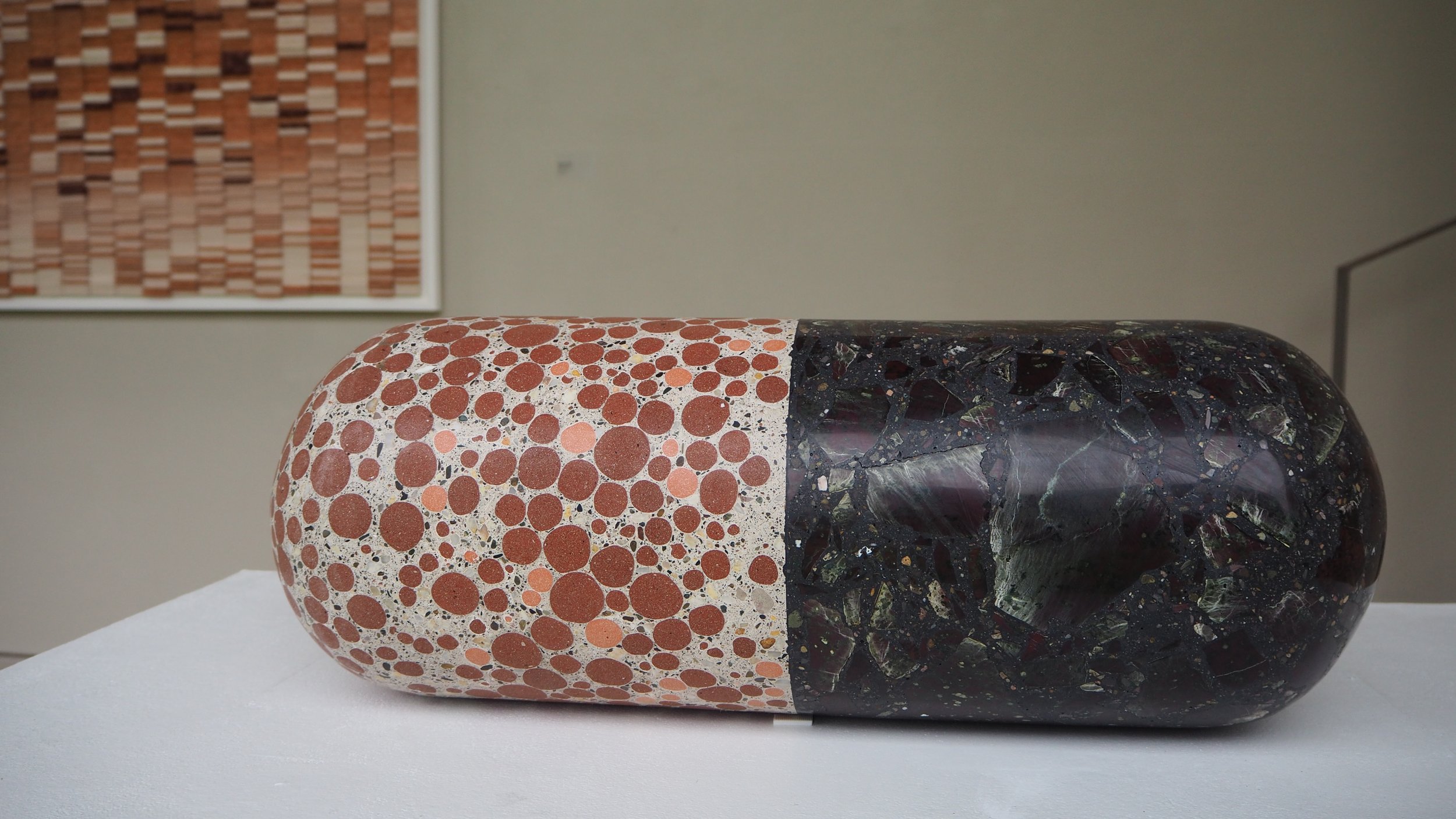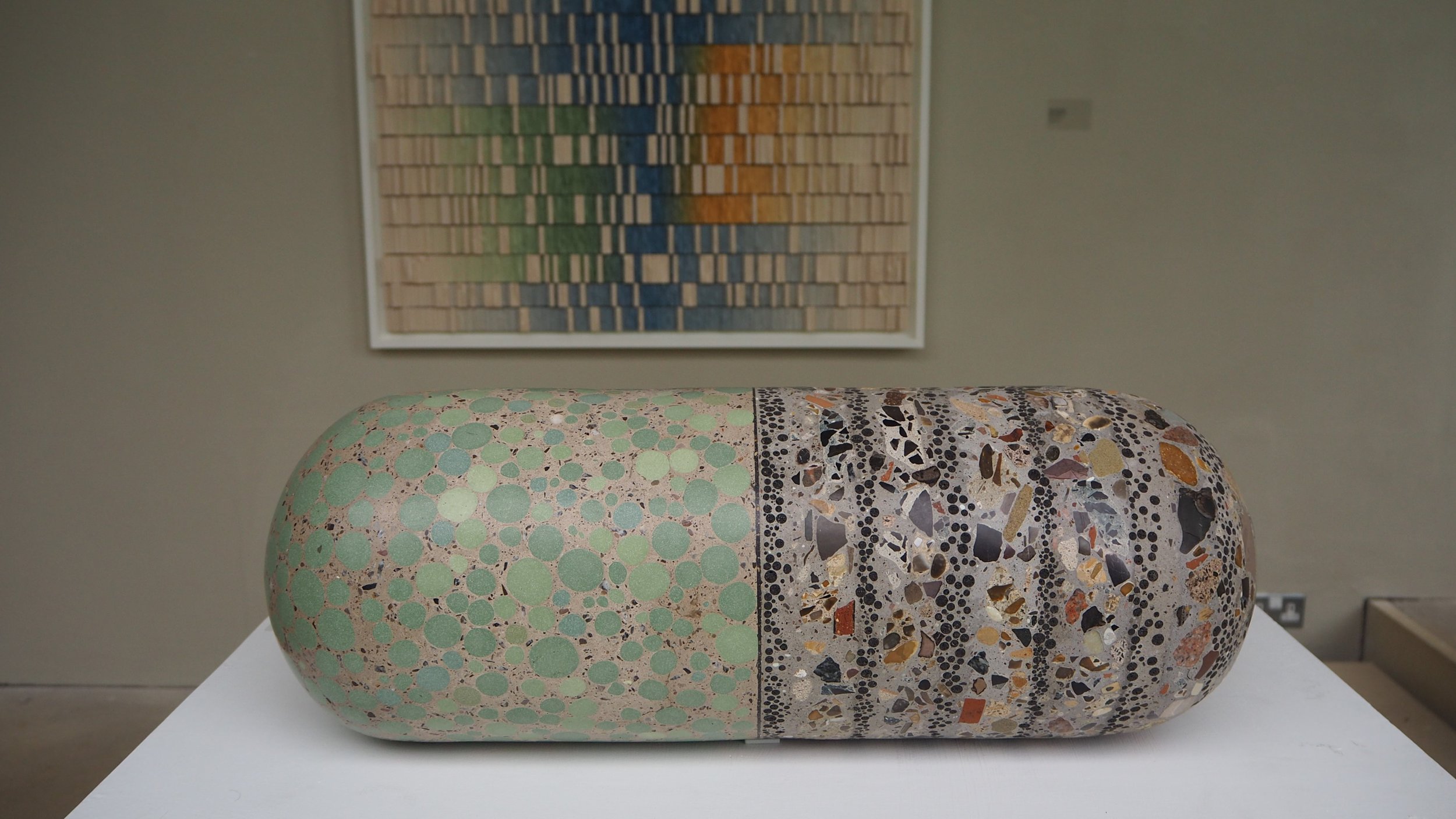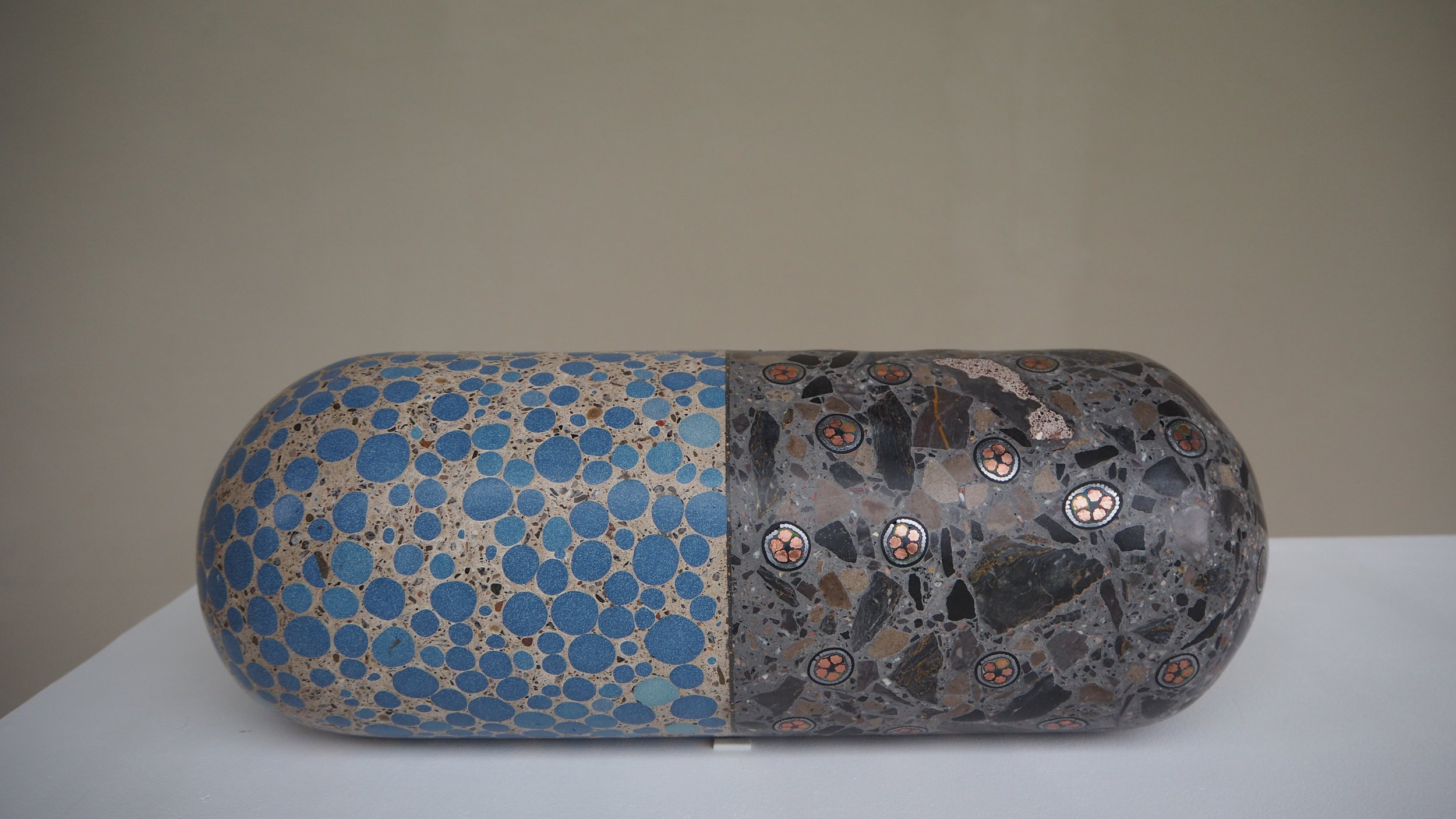Jacob van der Beugel Exhibition
Jacob van der Beugel, Cut and Paste 1, 2023
Ceramics, wooden frame, 120 x 130 x 5 cm
Now Open
Jacob van der Beugel
Wherever the two shall meet
In the gallery and sculpture park until 26 November 2023
The New Art Centre is pleased to present an exhibition of new works by Jacob van der Beugel. In this solo exhibition, located in the gallery of Roche Court, Jacob van der Beugel shows a series of ceramic and concreate pieces that illustrate our current genetic knowledge and biological data.
Jacob van der Beugel creates art to bridge the complex worlds of science and humanity.
Jacob van der Beugel, Wherever the Two Shall Meet, 2023
Ceramics, wooden frame, 170 x 130 x 5 cm
Humans are still evolving; we are works in progress. Wherever the two shall meet (featured above), exhibits the recently understood genes of two groups of people. Those who have an adaptation that enables more oxygen uptake in high altitude and those with a different adaptation for increasing time underwater. This panel consists of thousands of blue and white clay blocks.
Phillip Ball’s opening speech at the private view
Extract from the exhibition foreword by Phillip Ball, British science writer and broadcaster
‘There is no escaping the impact of genetic technologies on our cultures and society. Over the past several decades it has become possible both to read and to alter the sequences of the four molecular building blocks (called bases) that, permuted endlessly in our DNA, constitute our unique genomes. Reading that sequence – which commercial companies now offer to do by mail order – can seem like high-tech palmistry, analysing our genealogy and our personality and forecasting our fate from the health- and disease-related gene variants we carry. Meanwhile, genome editing techniques increasingly offer the prospect of changing that forecast, for example to “correct” gene mutations that induce diseases such as sickle-cell anaemia and Huntington’s disease.’
As an artist in residence at the Wellcome Sanger Institute in Cambridge in 2015, van der Beugel witnessed world-leading research on genomics. His assemblies of ceramic tile-like blocks embody real genomic sequences while dispelling the notion that there need be anything deterministic about the information they encode. These representations offer a nuanced contrast to the “book of life” commissioned and housed by the Wellcome Collection in London: 109 volumes of the three billion or so “DNA letters” sequenced by the Human Genome Project, printed as uncompromising black characters on white paper. Van der Beugel’s blocks, on the other hand, appear in graduated shades of both foreground and background, suggesting a context-dependent meaning. And on close inspection, the blocks have a surface that is only half smooth – the other half is rough where the clay was ripped apart. The duality reflects the way that each base is paired with another in the DNA double helix, but also the fact that its meaning often holds some unpredictability and ambiguity in the context of a living organism.
Jacob van der Beugel
Order M3, 2020
Ceramic, concrete, stainless steel, recycled aggregate, self-healing concrete
100 x 25 cm
3ft 3 ⅜ x 9 ⅞ in.
Order M Series – this series comprises of four columns. The subject matter focuses on the notion of change and mutation at a cellular and microscopic level but also touches on human change at a macro and built environment level. The sculptures make reference to the vitality of the human nervous system and the human ability to build resilience.
A Difficult Pill to Swallow: red, blue and green are a new body of work that use self-healing concrete and recycled aggregates, speaking of our new attempts to lighten our footprint upon the earth. This work consists of concrete cores and medicine pills, which illustrate the paradox of wanting to live longer with less impact.
These works are inspired by the blue pill/red pill metaphor (a reference to the Matrix) and also creates a new pill, the green pill. The capsules are made of self-healing concrete. The use of concrete in this regard speaks about our heavy footprint but also our need to heal ourselves and others. These are difficult things to swallow.
The blue pill contains beautiful armoured cabling; seductive and pretty.
The red pill consists of red serpentine stone, an apt stone, inducing metaphors of the garden of Eden serpent with brooding swirling red hues. The burden of knowledge.
The green pill becomes more a core sample from the Anthropocene and our need to digest our activities as having a deep-time footprint.









